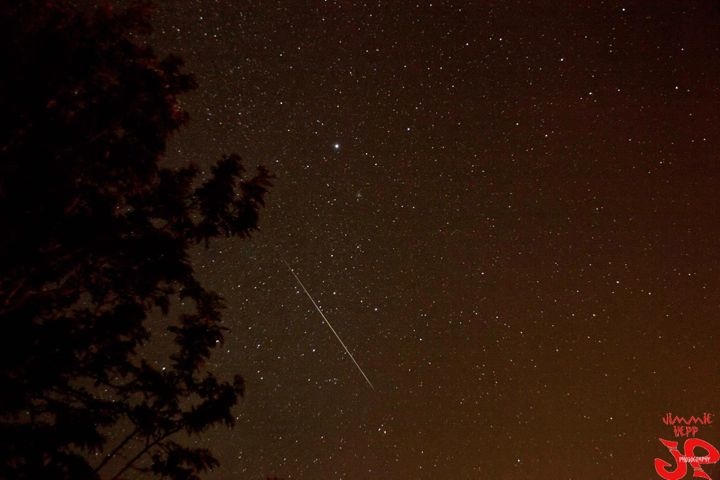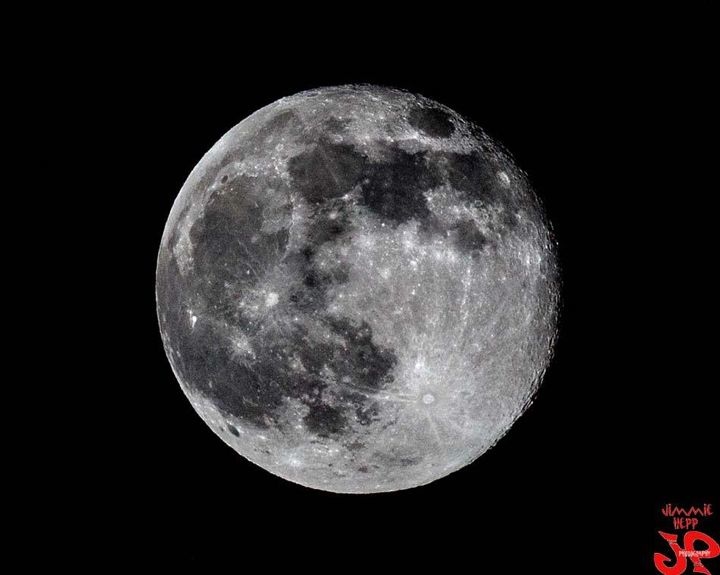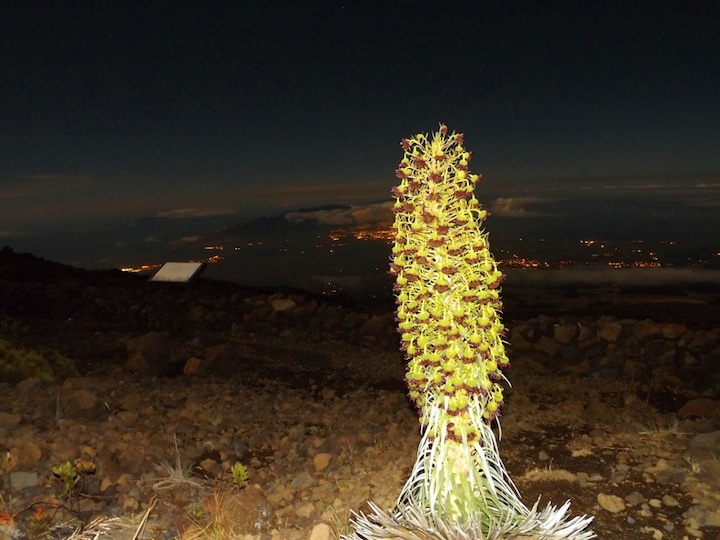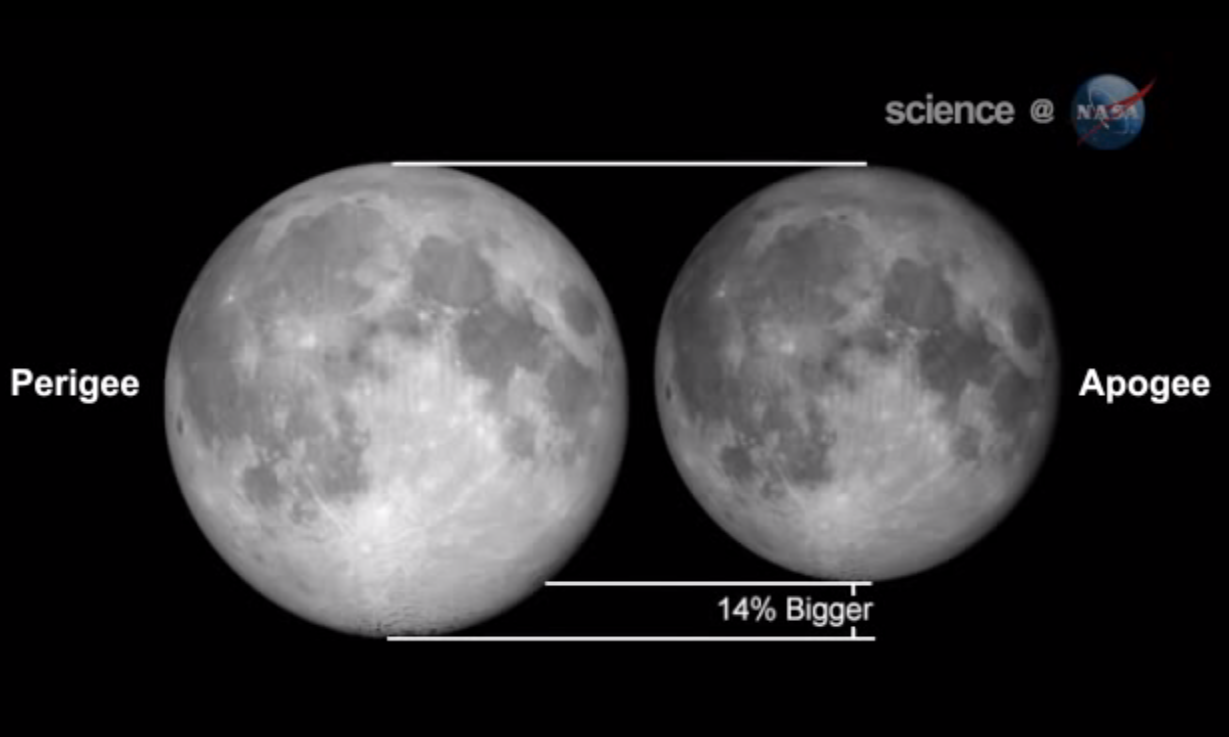
PC: Jimmie Hepp / Perseid Meteor Shower as viewed from Maui
What is a “supermoon?”
Today, August 10th, the moon is officially dubbed a “Supermoon” – the moon appears larger & brighter than usual, because it’s full. Today it also is at “perigee” - the point on the moon’s elliptical path when it is closest to earth. Full moon + Perigee = Supermoon
But this month, it’s an extra special super “supermoon!” This full moon is not only the brightest and largest full moon of the year, it’s also the closest encounter with Earth for the calendar year of 2014. The moon will not be so close again until the full moon of September 28, 2015.
Having said that, it’s not all that unusual to have a “supermoon” – in fact it’s relatively routine. There were three in a row last year. Tomorrow’s full moon is the second “supermoon” this year – the first was on July 12th (see photos from Jimmie Hepp above) – and it won’t be the last. On September 9th, we will also experience a “super moon.”
Why is the “supermoon” super?
A “supermoon” may look 30% brighter and appears up to 14% bigger than other full moons of the year but it’s not always easy to tell the difference between a “supermoon” and a normal full moon. The “moon illusion” is what really makes it stand out. For reasons scientists can’t quite put their finger on, low-hanging moons look unnaturally large when viewed near objects in the foreground – and when this happens at perigee – it can definitely be super! On August 10th the moon will rise at 7:05 pm.
So what does this mean for the “fireball champion” Perseid meteor shower?
It’s not good news…
During the peak nights of August 10 – 11 and August 12 – 13 lunar glare will light up the black backdrop needed to really view the shower to its full potential. At its peak (without a full moon) observers could potentially see 80 – 100 meteors an hour! Unfortunately, that won’t be the case this year. BUT, as NASA describes it – the “fireball champion of annual meteor showers” – will still have some standouts that shine as bright as Jupiter and Venus. According to NASA, a fireball is defined as an “explosion of light and color that can persist longer than an average meteor streak.” You’ll be able to see those fireballs despite the major interference by the moon. The Perseids often leave long trails and are generated as a result of Earth passing through the debris zone from Comet 109 P Swift Tuttle.
Best fireball viewing?
The rule of thumb is to view from somewhere dark enough where you can see all the stars of the Big Dipper (7 total), give your eyes 30 minutes to an hour to adjust to the darkness and lie flat on your back with your feet facing northeast. The meteors will appear to come from the constellation Perseus but your best bet to catch one is to look about a third of the way down from Perseus and away from the constellation so you can spot them streaking across the sky. The peak will be in the pre-dawn hours although it’s sometimes possible to view meteors from this shower as early as 10:00pm.
The Perseid shower is active from July 23 – August 22.
If you can’t see the peak activity of the Perseid meteor shower, NASA will also offer a live video stream and chat on Aug. 12th – Dr. Bill Cooke and his team of meteor scientists will take your questions via live web chat on the night of Aug. 12-13. A live Ustream view of the skies over Marshall Space Flight Center will also be offered, weather permitting. The Ustream view will appear at this link on Aug. 12 at:9:30 p.m. EDT. The live web chat will begin at the same link at 11 p.m. EDT.







Sunday, August 10th 2014 at 6:01 pm
[…] and I'll take care of winning while you do that Here is more info about the Supermoon tonight: Super “Supermoon” vs. “Fireball Champion” Perseid Meteor Shower | Life'… __________________ SANDY, MOM TO TIKI , KAYLA , KARLEE , R.I.P. […]
Sunday, August 10th 2014 at 9:28 am
Great blog Malika!! I just learned more about the SuperMoon and meteor showers than I ever knew. Now I’ll have to stay up really late and try to catch a good shot!!
I love your cursor!!! Slick!!
Sunday, August 10th 2014 at 10:17 am
ha ha! Thanks Jimmie!